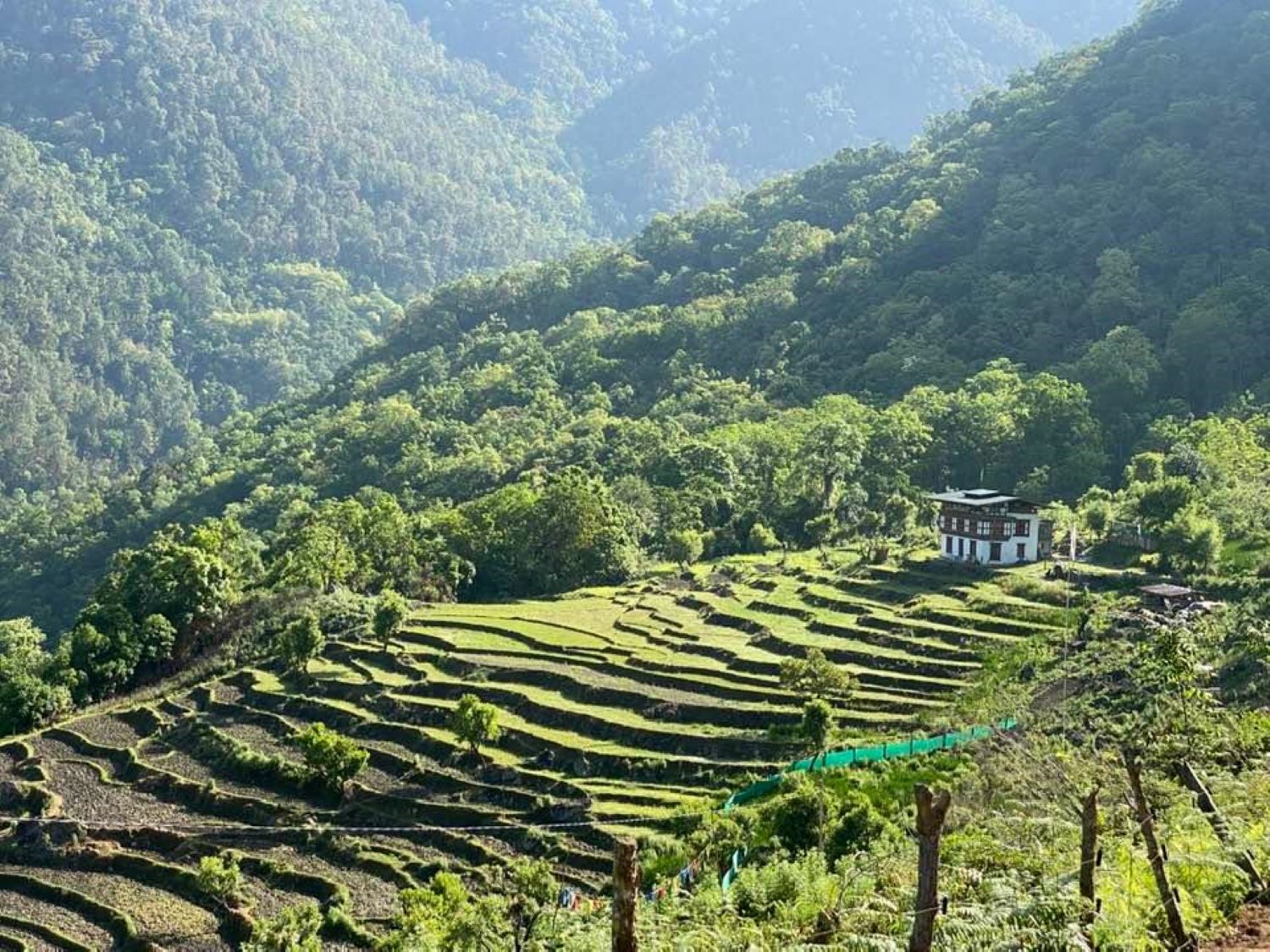
General Information
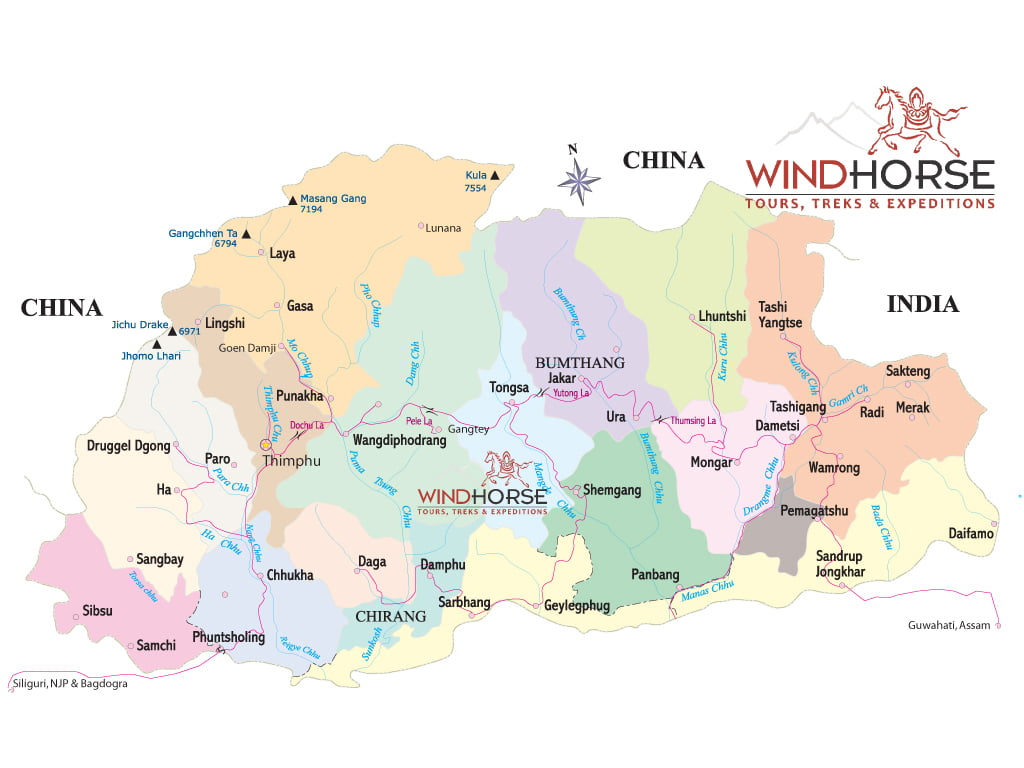
Bhutan is a landlocked country in South Asia located at the eastern end of the Himalayas. It remained in glorious isolation for better part of last century. Which gave birth to many myths and enigmas associated with it, to most it’s still shrouded in mystery and to larger extent the government want to keep alive these elements. Most viable means to achieve is to execute tourism in controlled fashion aligned with the concept of “High yield, low impact”Tourism. The objective of this policy is maximization of revenue from tourism with minimal impacts on the culture and environment. Since Bhutan is such a small place, geographically and demographically, uncontrolled tourism would have tremendous impacts.
Topographical features
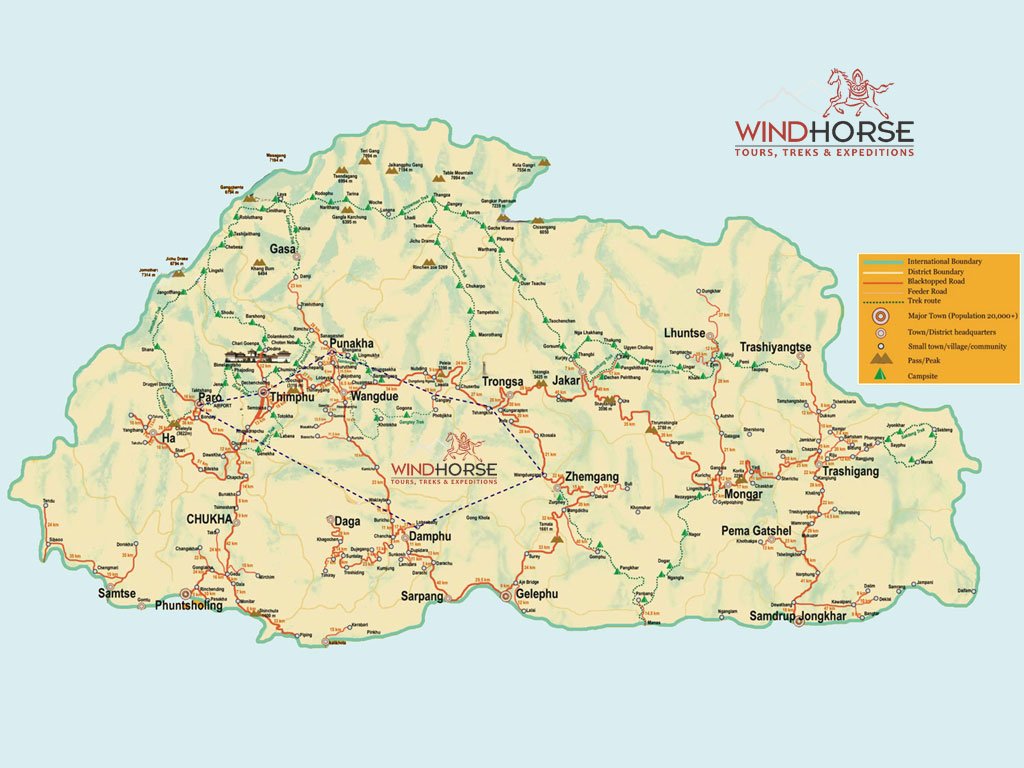
Bhutan is bordered to the north by China and to the south, east and west by India. To the west, it is separated from Nepal by the Indian state of Sikkim, while further south it is separated from Bangladesh by the Indian states of Assam and West Bengal. Bhutan’s capital and largest city is Thimphu. Bhutan is located on the southern slopes of the eastern Himalayas, landlocked between the Tibet Autonomous Region to the north and the Indian states of Sikkim, West Bengal, Assam and Arunachal Pradesh to the west and south. It lies between latitudes 26° and 29°N, and longitudes88° and 93°E. The
Rice field at Punakha valley
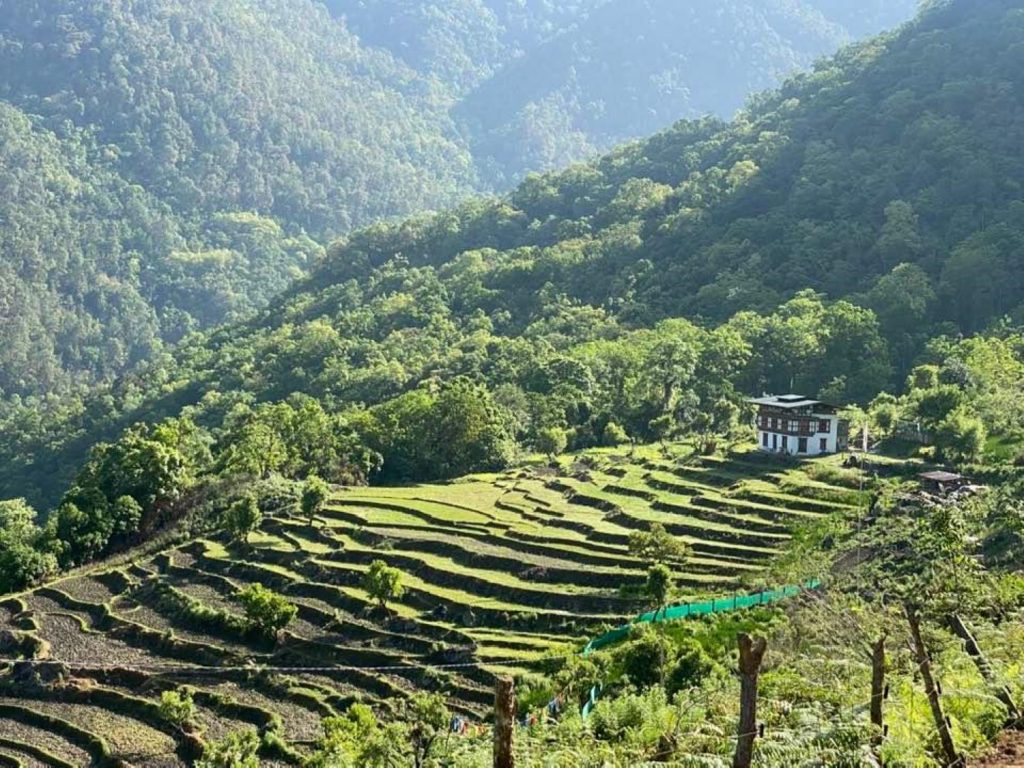
Land consists mostly of steep and high mountains crisscrossed by a network of swift rivers, which form deep valleys before draining into the Indian plains. Elevation rises from 200 m (660 ft) in the southern foothills to more than 7,000 m (23,000 ft). This great geographical diversity combined with equally diverse climate conditions contributes to Bhutan’s outstanding range of biodiversity and ecosystems. Bhutan’s landscape ranges from subtropical plains in the south to the sub-alpine Himalayan heights in the north, where some peaks exceed 7,000 metres (23,000 ft). Its total area is approximately 46,500 km2 (18,000 sq mi) and 38,394 square kilometers (14,824 sq mi)
History
Shabdrung Nawang Namgyel, unifer of Bhutan
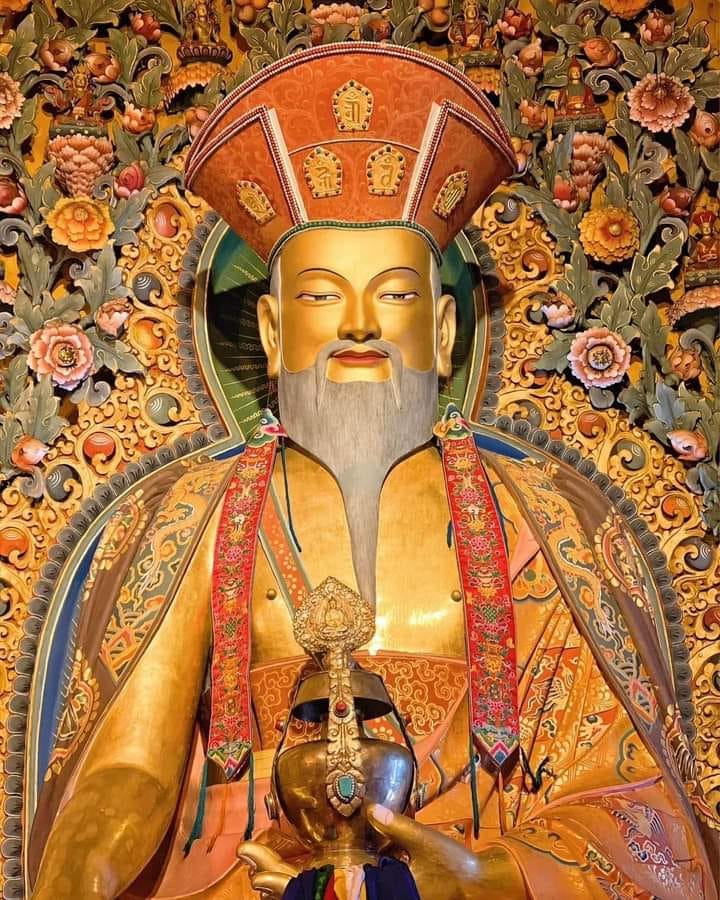
During 17th century, Bhutan was divided into many smaller provinces governed by its chieftains, when the lama and military leader Shabdrung Ngawang Namgyal, fleeing religious persecution in Tibet, unified the area and cultivated a distinct Bhutanese identity. Later, in the early 20th century, Bhutan came into contact with the British Empire and retained strong bilateral relations with India upon its independence.
Religion
Guru Rimpochoe
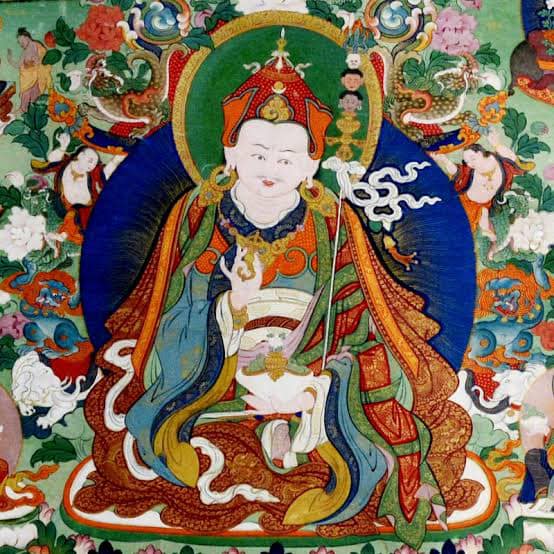
Bhutan’s state religion is Vajrayana Buddhism and the population, is predominantly Buddhist. Hinduism is the second-largest religion. Other religions account for less than 1% of the population. Buddhism was introduced to Bhutan in the 7th century AD. Tibetan king Songtsän Gampo (reigned 627–649), a convert to Buddhism, ordered the construction of two Buddhist temples, at Bumthang in central Bhutan and at Kyichu Lhakhang (near Paro) in the Paro Valley.
Political Scenario:In 2008, Bhutan made the transition from absolute monarchy to constitutional monarchy and held its first general election. King Jigme Singye Wangchuck transferred most of his administrative powers to the Council of Cabinet Ministers and allowing for impeachment of the King by a two-thirds majority of the National Assembly.In 1999, the government lifted a ban on television and the Internet, making Bhutan one of the last countries to introduce television.
Cultural, Traditional and Social Dimensions
Social Gathering
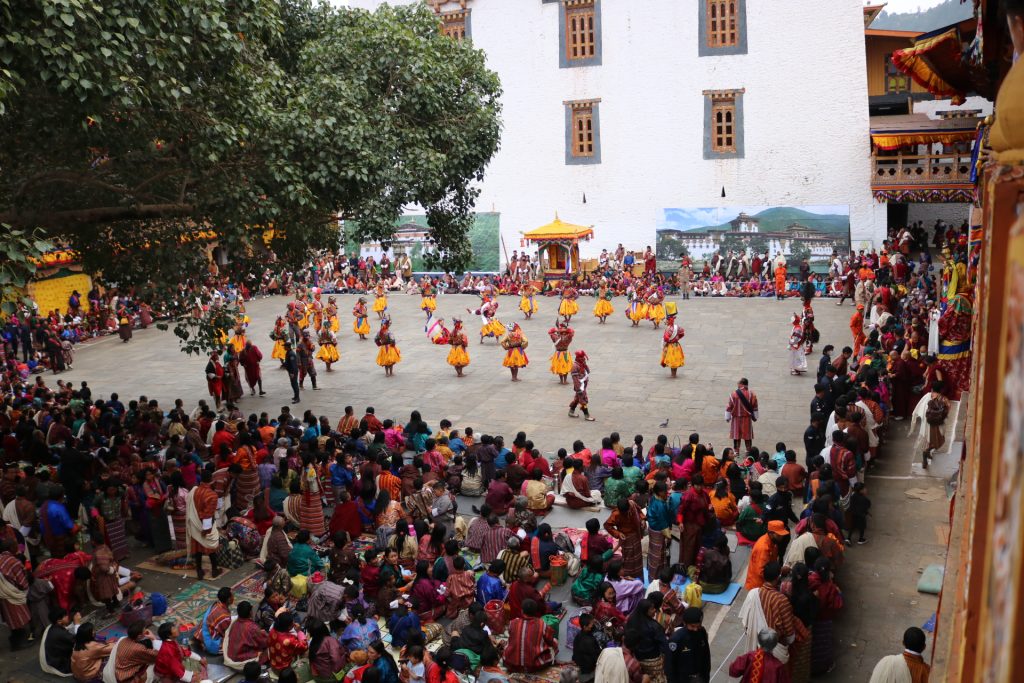
Bhutan has a rich and unique cultural heritage that has largely remained intact because of its isolation from the rest of the world until the early 1960s. One of the main attractions for tourists is the country’s culture and traditions. Bhutanese tradition is interwoven with the fabric of religion and its Buddhist heritage. Modern Bhutanese culture derives from ancient culture. This culture affected the early growth of this country. Dzongkha and Sharchop, the principal Bhutanese languages, are closely related to Tibetan, and Bhutanese monks read and write the ancient variant of the Tibetan language, known as chhokey. Bhutanese are physically similar to the Tibetans.Bhutanese society is centered on the practice of Buddhism, which is the main religion. Religious beliefs are evidenced in all aspects of life. Prayer flags flutter on hillsides, offering up prayers to benefit all nearby sentient beings
Dress
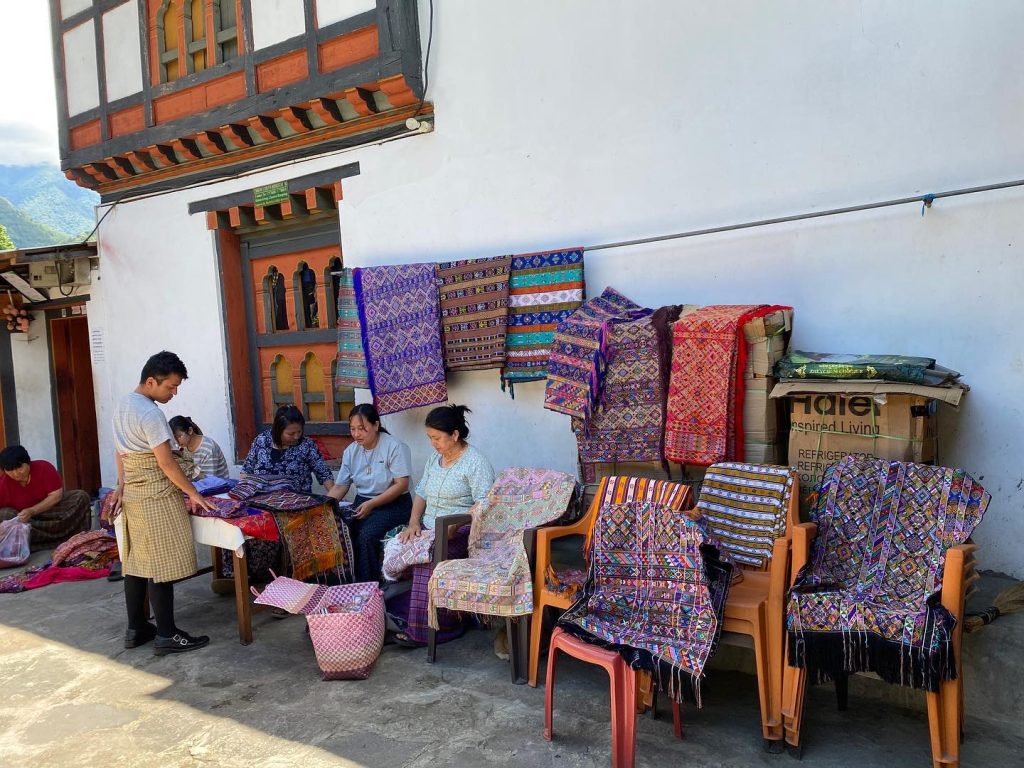
Traditional homemade textile at display at shop.
The national dress for Bhutanese men is the gho, a knee-length robe tied at the waist by a cloth belt known as the kera. Women wear an ankle-length dress, the kira, which is clipped at the shoulders with two identical broaches called the koma and tied at the waist with kera. An accompaniment to the kira is a long-sleeved blouse, the wonju which is worn underneath the kira Bhutanese law requires all Bhutanese government employees to wear the national dress at work and all citizens to wear the national dress while visiting schools and other government offices though many citizens, particularly adults, choose to wear the customary dress as formal attire.
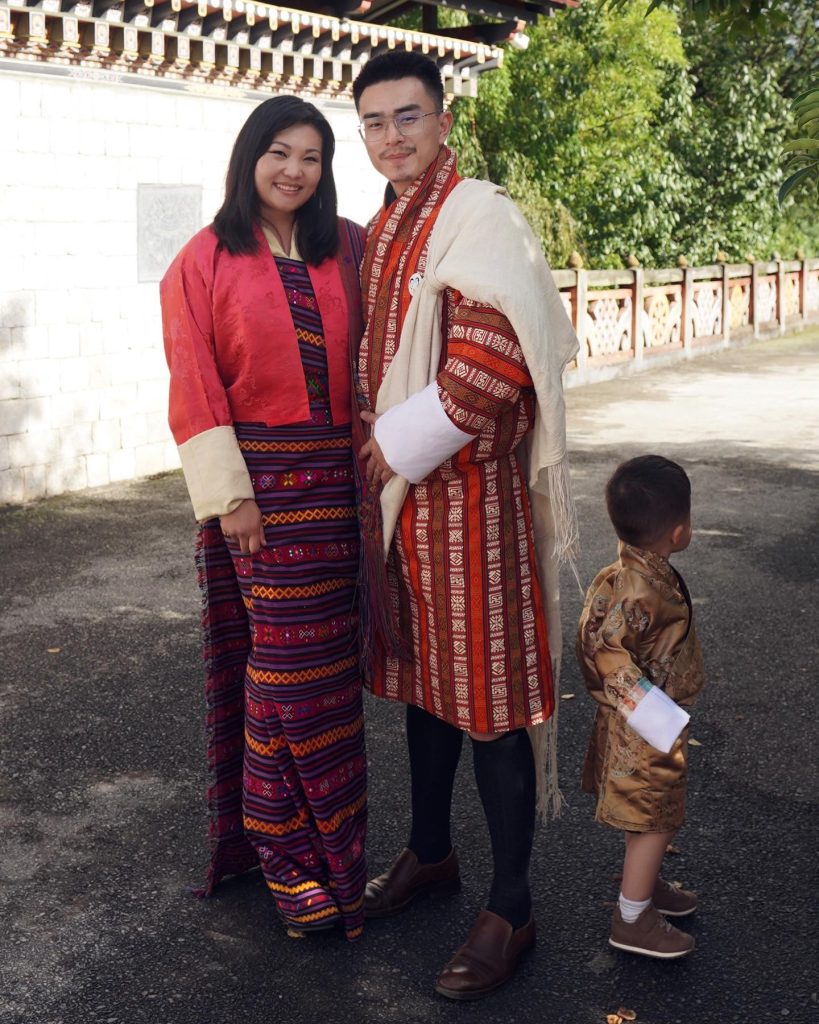
A couple wearing Traditional dress, “Gho” for men and Kira for women.
Architecture
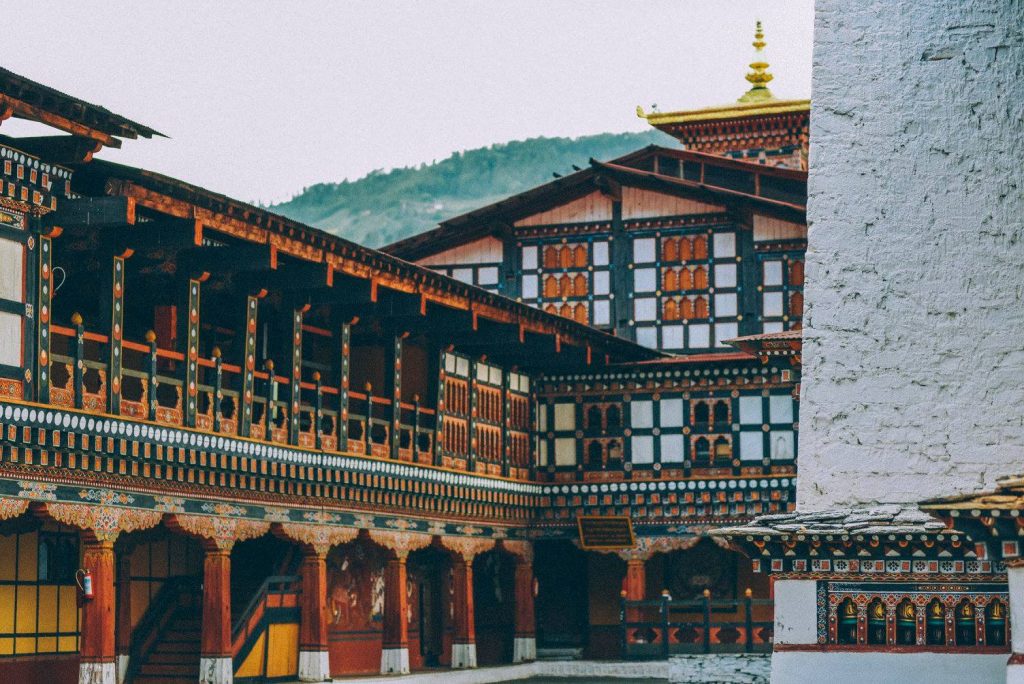
Bhutanese architecture remains distinctively traditional, employing rammed earth and wattle and daub construction methods, stone masonry, and intricate woodwork around windows and roofs. Traditional architecture uses no nails or iron bars in construction.
Cuisine
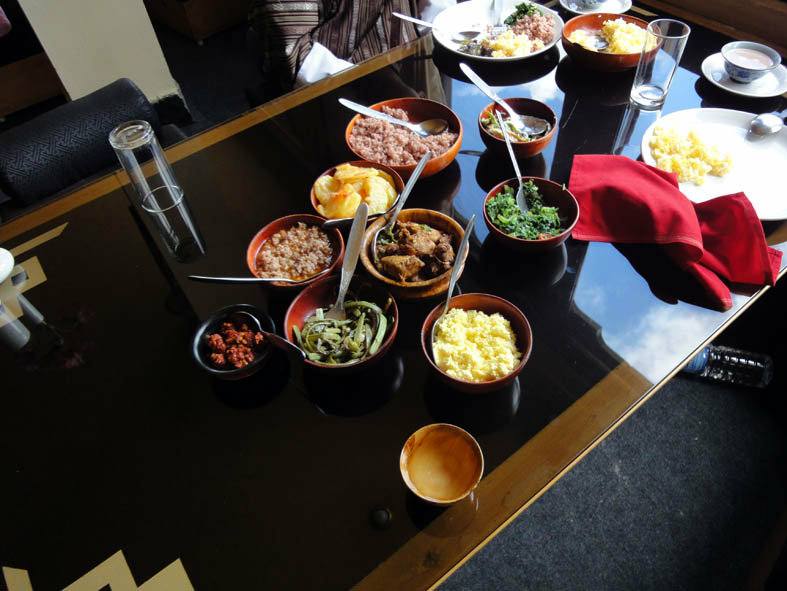
Rice, buckwheat, and increasingly maize, are the staples of Bhutanese cuisine. The local diet also includes pork, beef, yak meat, chicken, and mutton. Soups and stews of meat and dried vegetables spiced with chillies and cheese are prepared. Ema datshi, made very spicy with cheese and chilies, might be called the national dish for its ubiquity and the pride that Bhutanese have for it. Dairy foods, particularly butter and cheese from yaks and cows, are also popular, and indeed almost all milk is turned to butter and cheese. Popular beverages include butter tea, tea.
Sport
Bhutan’s national sport is archery, and competitions are held regularly in most villages. It differs from Olympic standards in technical details such as the placement of the targets and atmosphere. There are two targets placed over 100 meters apart and teams shoot from one end of the field to the other. Each member of the team shoots two arrows per round. Traditional Bhutanese archery is a social event and competitions are organized between villages, towns, and amateur teams. There are usually plenty of food and drink complete with singing and dancing
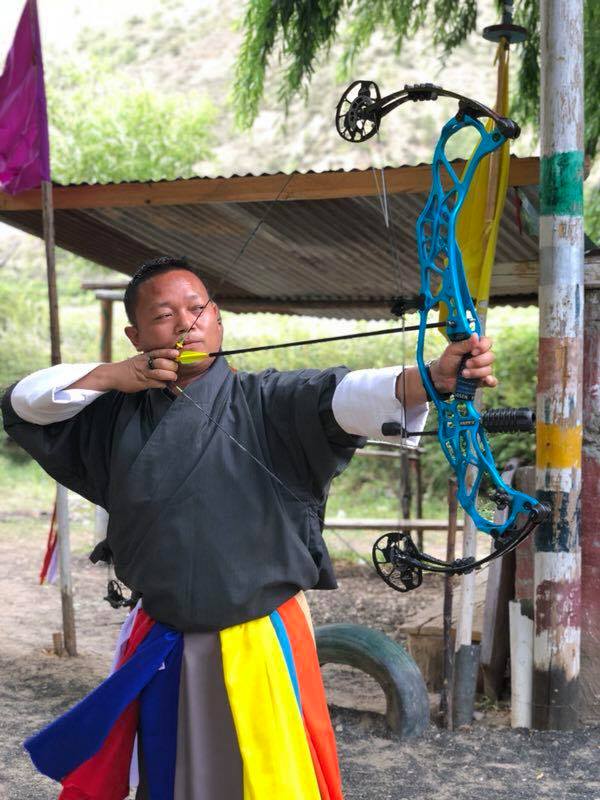
Archery in action
